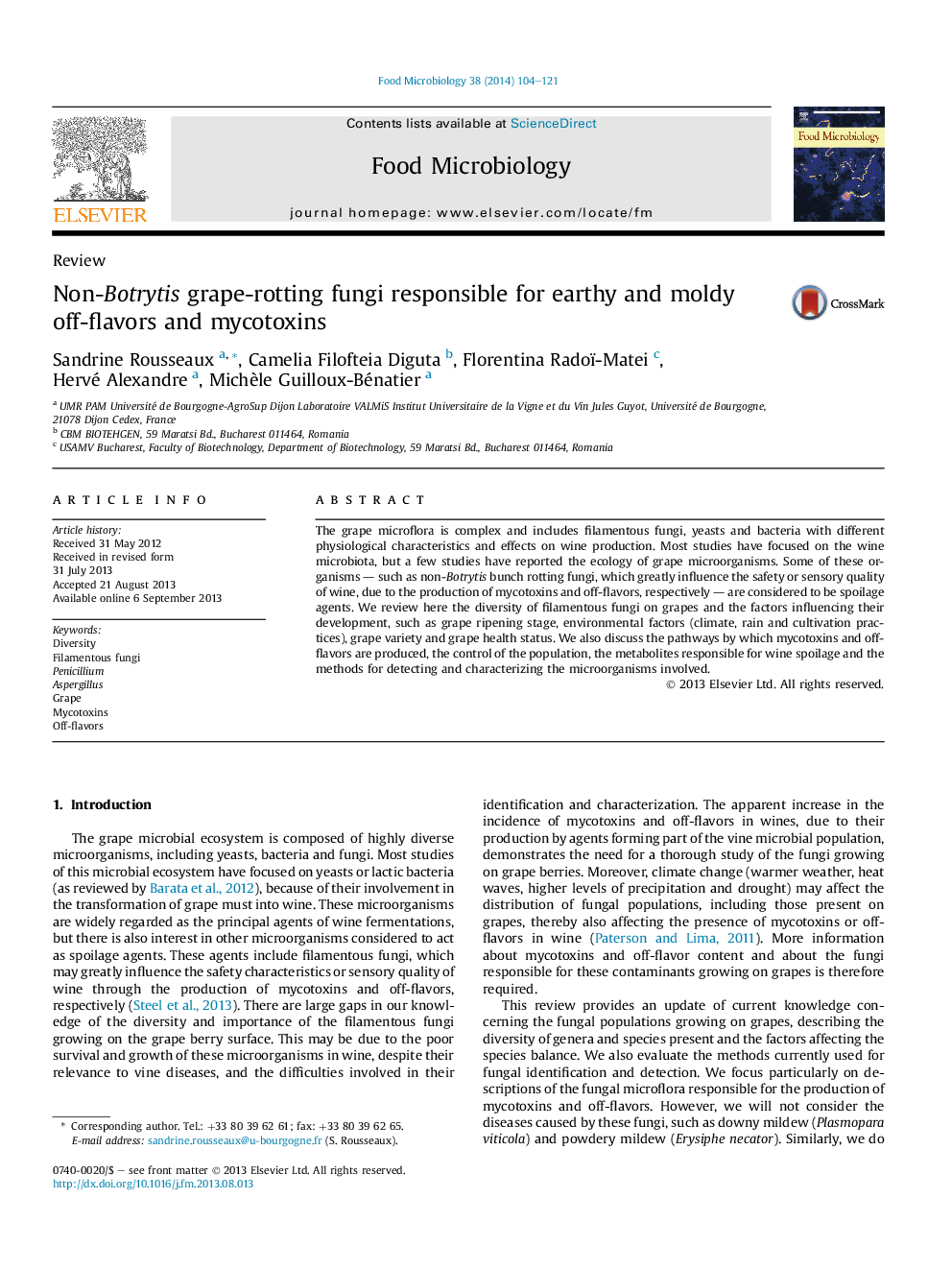| Article ID | Journal | Published Year | Pages | File Type |
|---|---|---|---|---|
| 4362925 | Food Microbiology | 2014 | 18 Pages |
•70 genera have been isolated and identified on grapes from vineyards around the world.•Environmental factors (climate…) influence the diversity of fungi on grapes.•Aspergillus and Penicillium are considered to be spoilage agent.•These genera are responsible to the production of mycotoxins or off-flavors.•Vineyard management strategies are essential to limit the amounts of metabolites.
The grape microflora is complex and includes filamentous fungi, yeasts and bacteria with different physiological characteristics and effects on wine production. Most studies have focused on the wine microbiota, but a few studies have reported the ecology of grape microorganisms. Some of these organisms — such as non-Botrytis bunch rotting fungi, which greatly influence the safety or sensory quality of wine, due to the production of mycotoxins and off-flavors, respectively — are considered to be spoilage agents. We review here the diversity of filamentous fungi on grapes and the factors influencing their development, such as grape ripening stage, environmental factors (climate, rain and cultivation practices), grape variety and grape health status. We also discuss the pathways by which mycotoxins and off-flavors are produced, the control of the population, the metabolites responsible for wine spoilage and the methods for detecting and characterizing the microorganisms involved.
